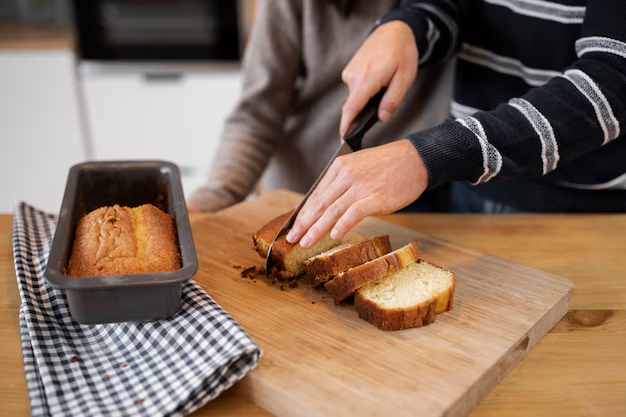How Long Does Cookie Dough Stay Fresh in the Fridge?
There's nothing quite like the anticipation of warm cookies fresh out of the oven. But what happens when you're armed with a tub of cookie dough and life gets in the way of your baking plans? Knowing how long cookie dough remains fresh in the refrigerator is crucial to ensure that your sweet treats are as delicious and safe to eat as intended. Let's dive into the intricacies of cookie dough storage, covering everything from different types of dough to practical tips for extending its shelf life.
Understanding Cookie Dough Shelf Life
Types of Cookie Dough
Cookie dough comes in various forms, each with distinct storage needs. While homemade dough is the most common, many people enjoy store-bought dough for its convenience. Here’s a closer look at the types of cookie dough:
Homemade Dough: Made from scratch, this dough allows for unlimited creativity and ingredient adjustments. However, homemade dough typically contains no preservatives, requiring careful attention to storage.
Store-Bought Dough: Available refrigerated or frozen, these doughs sometimes contain stabilizers and preservatives that may extend their shelf life. Brands may offer cookies in shapes, logs, or portions for easy baking.
Edible Cookie Dough: Specifically formulated to be eaten raw, this dough has undergone special treatments to ensure safety. It often contains pasteurized eggs and heat-treated flour.
General Guidelines for Storage
Refrigeration is Key: Most cookie doughs benefit from being stored in the refrigerator. By slowing microbial growth, refrigeration helps keep dough safe for consumption longer than if left at room temperature.
Use Within a Reasonable Time Frame: A general guideline for refrigerating cookie dough is to use homemade dough within 3-5 days. Store-bought dough can often last up to 2 weeks depending on the packaging instructions. Always check the expiration date on store-bought dough for accuracy.
Extending the Life of Your Cookie Dough
Proper Storage Techniques
Sealed Containers: Airtight containers are your best friend when it comes to storing cookie dough. They prevent the dough from absorbing other odors in the fridge and help maintain its moisture content.
Plastic Wrap and Foil: Wrapping homemade cookie dough tightly in plastic wrap or aluminum foil can act as a handy alternative to containers, particularly if space in your fridge is limited.
Labeling: Always label your dough with the date it was made or the expiration date if it's store-bought. This ensures you don't accidentally keep it longer than is safe.
Freezing for Longer Shelf Life
If you don’t plan to use your dough within the recommended fridge timeframe, consider freezing it. Here’s how you can do it effectively:
- Pre-Portioning: Roll dough into balls or logs before freezing. This makes it easy to thaw and bake without having to defrost the entire batch.
- Freezer Bags: Place portioned doughs in a freezer-safe bag, removing as much air as possible before sealing.
- Utilize Freezer Paper: For extra protection against freezer burn, wrap your dough in freezer paper before putting it in the bag.
Tip: Most cookie doughs can be frozen for 6-12 months without significant loss of quality. When ready to use, thaw in the refrigerator overnight before baking.
Recognizing Bad Cookie Dough
Despite your best efforts, sometimes cookie dough goes bad. Identifying spoiled dough is essential for health and safety:
Odor: Spoiled dough emits an off, sometimes sour smell, unlike the sweet aroma it had when fresh.
Color: Changes in color, especially a greyish or dark shade, can indicate spoilage.
Texture: If the dough feels excessively sticky or slimy, it's best to err on the side of caution and dispose of it.
Mold Growth: Spotting mold on dough, whether in patches or specks, is a surefire sign that it should be discarded.
Updated Recommendations for Safety
Using heat-treated flour and pasteurized eggs reduces the risk of pathogens in homemade dough. If you're a fan of raw cookie dough, consider using these safer ingredients to enjoy your treat with peace of mind.
Advanced Tips for Cookie Dough Enthusiasts
Experimenting with Flavors and Ingredients
While sticking to classic recipes is always comforting, don’t shy away from experimenting with different ingredients. Adding spices, nuts, or dried fruits can transform your cookie flavors. Remember to account for any added moisture from these ingredients, which could necessitate slight adjustments in refrigerating time.
Making the Most of Edible Cookie Dough
Since edible cookie doughs are specially formulated for raw consumption, they're safer alternatives for anyone craving the raw dough experience. These doughs are specially treated, so they generally don't have the same concerns for shelf life as standard doughs.
Summary: Key Points to Remember 🎯
Here's a handy summary to help ensure your cookie dough remains delicious and safe:
- Refrigeration is Essential: Store homemade dough for up to 5 days and follow packaging instructions for store-bought varieties.
- Freezing for Longevity: Most cookie doughs can be frozen, maintaining their quality for 6-12 months. Pre-portioning the dough is highly recommended.
- Avoid Spoiled Dough: Watch for odd smells, color changes, sticky textures, and mold.
- Experiment Safely: Use heat-treated flour and pasteurized eggs when making your dough, especially if consuming raw.
- Edible Dough Option: For an immediate sweet tooth fix, try edible cookie dough.
In conclusion, understanding how to store cookie dough properly ensures not only the best flavor and texture for your cookies but also food safety. Whether you are a baking novice or a dough expert, keeping these tips in mind will enhance your dough management skills and, ultimately, your baking experience.
